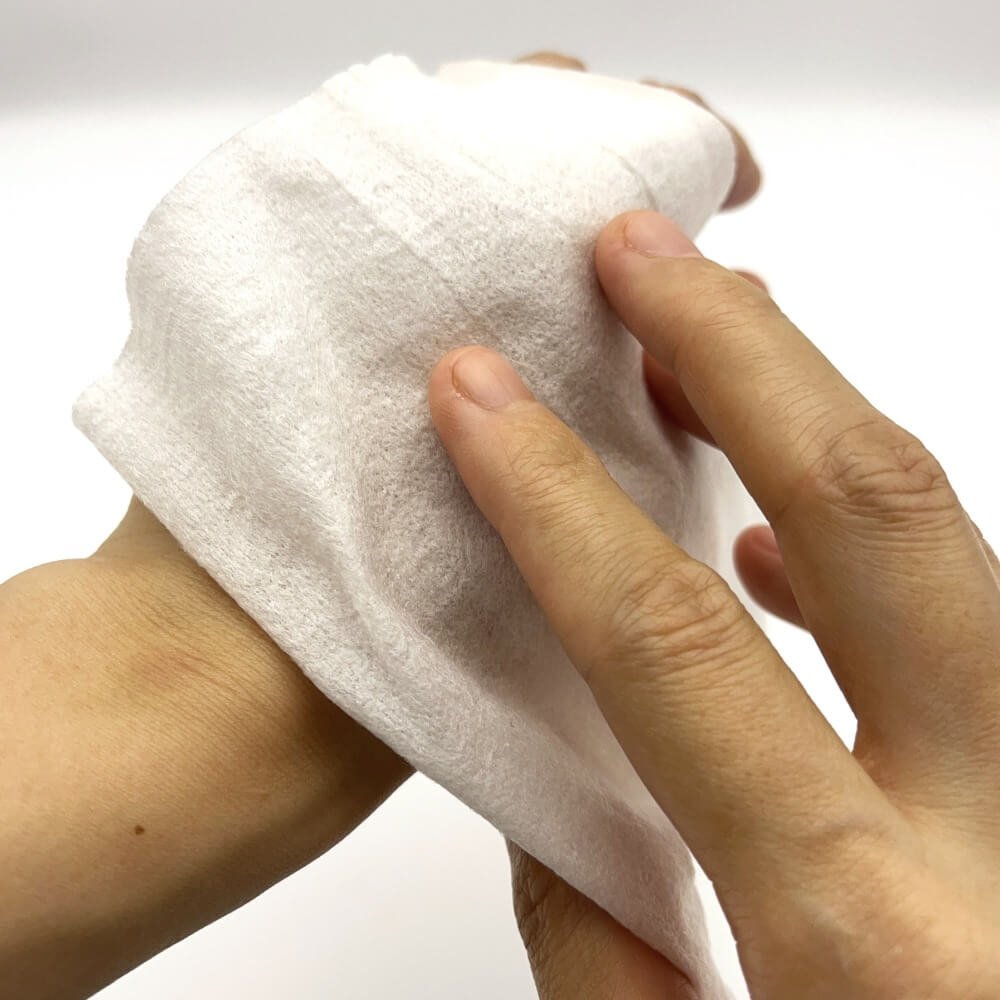Disinfectant wet wipes, the epitome of convenience, stand as a frontline defense against germs and viruses in various environments, from homes to hospitals. Their effectiveness and ease of use have made them a staple in daily hygiene routines. However, with numerous brands and types available on the market, choosing the right wipes can take time and effort. This guide aims to arm you with information on the types, key features, and best practices in using disinfectant wet wipes, ensuring you make choices that are not only effective but also safe and suitable for your specific needs.
Types of Disinfectant Wet Wipes
Alcohol-Based Wipes
Alcohol-based wipes are known for their rapid germ-killing action. They typically contain either isopropyl alcohol or ethyl alcohol at concentrations effective enough to kill most bacteria and viruses on surfaces. These wipes are ideal for high-touch areas such as doorknobs, countertops, and medical settings where sterilization is paramount. However, their use should be monitored in households with small children or pets due to potential toxicity and the risk of skin irritation.
Non-Alcohol Based Wipes
Non-alcohol-based wipes, with their alternative active ingredients like benzalkonium chloride, offer effective cleaning properties and are often used in environments where safety and gentleness are priorities, such as schools and daycares. Their less harsh nature makes them suitable for sensitive skin, providing reassurance and confidence in their use. They are also preferable for personal hygiene purposes, as they are less drying to the skin compared to their alcohol-based counterparts.
Specialty Wipes for Sensitive Skin
Recognizing the needs of users with sensitive skin, some manufacturers have developed wipes that contain gentle, soothing agents such as aloe vera, vitamin E, and chamomile. These specialty wipes are designed to provide effective disinfection while minimizing any adverse skin reactions. They are an excellent choice for anyone prone to allergies or skin irritations, ensuring cleanliness without discomfort.
Factors to Consider When Choosing Disinfectant Wet Wipes
Ingredient Safety and Efficacy
The effectiveness of disinfectant wipes hinges on their active ingredients and their concentrations. When selecting wipes, it’s crucial to check the label for EPA registration, which indicates the wipe is tested and proven to perform as claimed. Additionally, consider the spectrum of microbial activity—some wipes are formulated to target specific pathogens like MRSA or the flu virus, which can be particularly useful during outbreaks or flu seasons.
Packaging and Dispensing Options
The design of the packaging can significantly affect the longevity and effectiveness of wipes. Select wipes in airtight, re-sealable packaging to prevent them from drying out. Also, consider dispensing features that allow for easy single-wipe removal to avoid cross-contamination between surfaces and users.
Price vs. Quantity: What’s the Best Deal?
Cost-effectiveness is another important factor. While it may be tempting to go for cheaper options, quality should not be compromised. Calculate the cost per wipe to compare different brands and packages accurately. Larger packs often provide better value but consider your usage rate to avoid wastage of wipes due to drying out.
Usage Guidelines for Disinfectant Wipes
Correct Techniques for Disinfection
To maximize the efficacy of disinfectant wipes, it is essential to use them correctly. Always clean visible dirt from surfaces prior to disinfection to enhance the germ-killing action of the wipe. Use enough wipes to keep the surface visibly wet for the time specified on the label, which is usually between 30 seconds and several minutes, allowing the active ingredients to kill the pathogens effectively.
Common Mistakes to Avoid
A frequent mistake in using disinfectant wipes is reusing them on multiple surfaces, which can spread germs rather than eliminate them. Each wipe should be used once and then disposed of properly. Also, avoid using disinfectant wipes on porous surfaces like fabric or untreated wood, as the moisture and chemicals can damage them.
Comparative Analysis of Popular Brands
Brand A vs. Brand B: A Closer Look
When choosing between brands of disinfectant wipes, it’s important to consider how each aligns with your needs. For instance, Brand A may offer a formula that is particularly effective against a wide range of bacteria and is favored in healthcare settings. At the same time, Brand B might be alcohol-free, catering to users with sensitive skin or environments with children. Compare ingredients, efficacy, scent, and customer reviews to make an informed decision. For example, some brands might use a higher concentration of active ingredients, which can affect their suitability for different environments—more potent for medical settings but perhaps too strong for home use.
What Users Say: Review Summaries
User reviews can provide insights into the real-world effectiveness and user satisfaction of different disinfectant wipe brands. For instance, reviews might highlight Brand A’s efficacy but criticize its harshness on the skin, while Brand B might be praised for its gentle formula but noted as less effective on tougher bacteria. Accumulating such feedback helps potential buyers anticipate the experience of using the wipes.
Environmental Impact of Disinfectant Wipes
Biodegradability and Sustainability
The environmental impact of using single-use disinfectant wipes is significant and should not be overlooked. Traditional wipes can take decades to decompose, contributing to landfill waste. However, some brands now offer biodegradable options, which break down more quickly and are made from renewable resources like bamboo or cellulose. By choosing these sustainable options, you can reduce the environmental footprint while maintaining the same level of hygiene, fostering a sense of responsibility and mindfulness.
Alternatives to Traditional Wipes
For those concerned about environmental sustainability, reusable alternatives such as microfiber cloths can be used in conjunction with liquid disinfectants. These clothes can be washed and reused multiple times, offering a more eco-friendly approach to disinfection. However, it’s crucial to follow proper laundering practices to maintain their effectiveness.
Innovations in Disinfectant Wipes
Recent Technological Advancements
The disinfectant wipes industry is seeing innovations such as improved formulations that increase the spectrum of efficacy against pathogens or reduce the time needed to disinfect surfaces. Additionally, advancements in packaging technology help preserve the moisture and efficacy of wipes for longer, such as better sealing mechanisms and dispensers that minimize exposure to air.
Future Trends in Wipe Formulation
Looking forward, the trend in disinfectant wipes is leaning toward products that are both effective and environmentally friendly. Innovations might include fully biodegradable wipes that deliver strong disinfecting power without the environmental toll. Another potential trend is the development of wipes that offer targeted disinfection for specific pathogens, improving efficiency and reducing the risk of antimicrobial resistance. By staying informed about these potential future trends, you can make more informed decisions about the disinfectant wipes you choose.
9 Tips for Effective Use of Disinfectant Wipes
- Read the Label: Always follow the instructions on the packaging for the most effective use.
- One Wipe, One Application: Use each wipe on one surface, then discard it to avoid cross-contamination.
- Keep It Wet: Ensure the surface stays wet for the duration indicated on the wipe’s label to allow the disinfectant to work.
- Use on Suitable Surfaces: Avoid using wipes on porous surfaces and electronics unless specified by the manufacturer.
- Close Packaging Tightly: Seal the pack after each use to prevent the wipes from drying out.
- Dispose Properly: Do not flush wipes down the toilet; dispose of them in the trash.
- Wear Gloves If Necessary: If you have sensitive skin or allergies, consider wearing gloves while using disinfectant wipes.
- Store in a Cool, Dry Place: Keep wipes away from direct sunlight and heat sources, which can degrade the active ingredients.
- Test in a Small Area: Especially for new brands, test the wipes on a small, inconspicuous area first to ensure no damage or discoloration occurs.
FAQs and Conclusion
How effective are disinfectant wipes against viruses?
Most high-quality disinfectant wipes are effective against common viruses, including the flu and coronaviruses, provided they are used correctly according to the instructions.
Can disinfectant wipes be used on the skin?
Generally, disinfectant wipes are intended for use on surfaces and not on skin. Use wipes designated for skin application if needed.
Are there any wipes suitable for all surfaces?
While no wipe can suit every surface, multipurpose disinfectant wipes are formulated to be safe on a variety of non-porous surfaces. Check the manufacturer’s guidelines for specific use cases.
In conclusion, choosing the right disinfectant wet wipes involves understanding their types, ingredients, and appropriate uses. Considering environmental impacts and innovations can also guide responsible choices. By following these guidelines and utilizing the tips provided, you can ensure effective disinfection and hygiene maintenance in a way that suits your needs and values.

